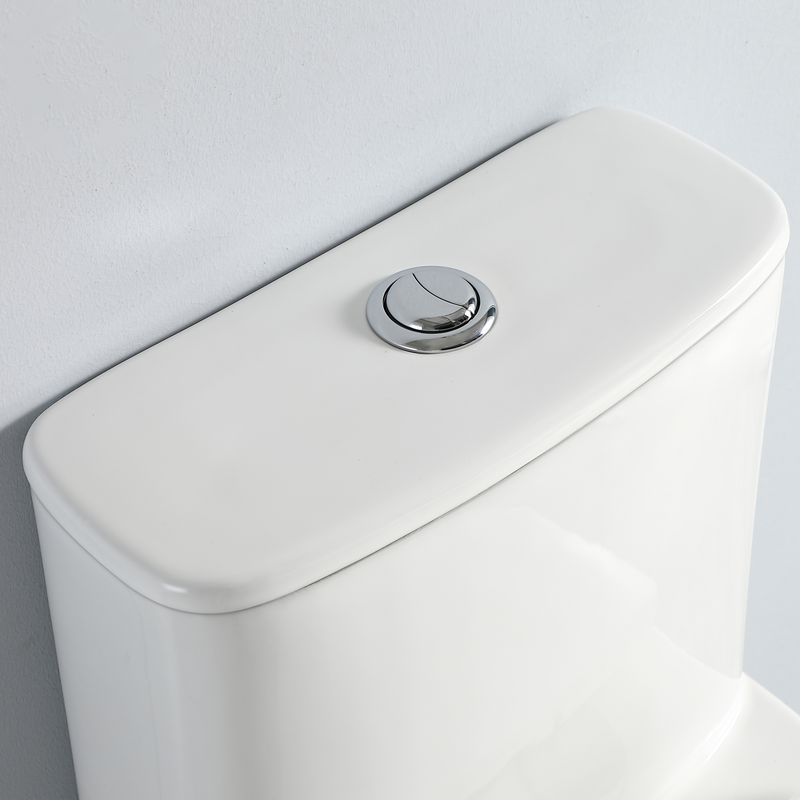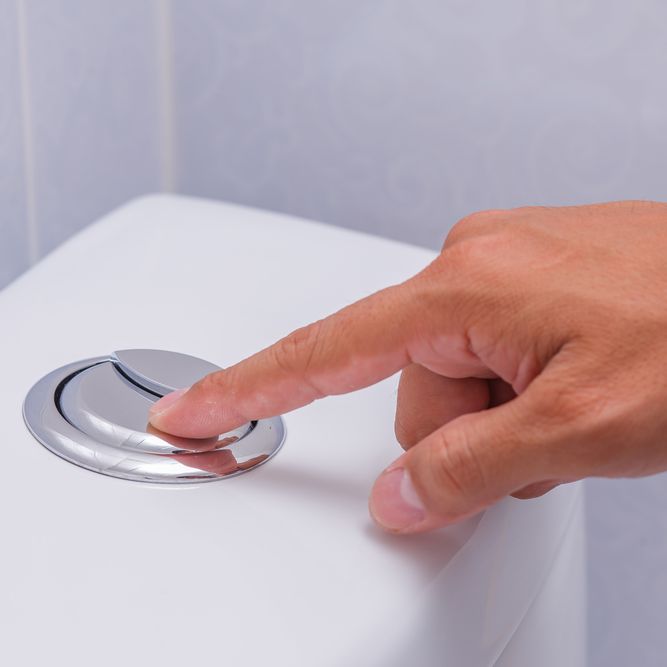 English
English
Jabra Sanitary is a sanitaryware supplier offering toilets, sinks, faucets, bathtubs, etc., at competitive prices. If you're a distributor, wholesaler, or project contractor, get a quote today!
 $23.9 Limited-time Offer
$23.9 Limited-time Offer Consignment Policy
Consignment Policy 20 Years of Experience
20 Years of Experience
When designing or remodeling your bathroom, one of the most crucial elements to consider is the toilet. Choosing the right toilet for your bathroom is an essential part of creating a comfortable and functional space.
The best toilet bowl can not only enhance the overall look of your bathroom but also provide you with ease of use and contribute to water conservation. Here's a comprehensive guide to help you make an informed decision on choosing the right toilet.
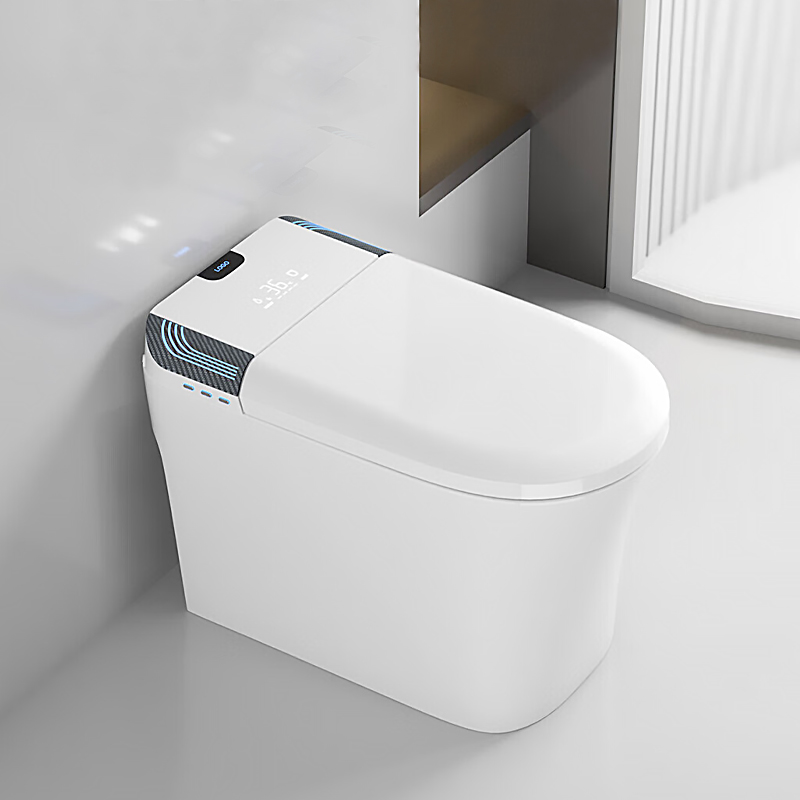
Table of Contents
How to Choose the Right Toilet
Step 1: Measure Your Bathroom Space
Step 2: Toilet Rough-In Dimensions is also important
Step 3: Choose the Type of Toilet
Step 4: Decide on Flushing System
Step 5: Select Features for Comfort and Convenience
Step 6: Compare the Water Efficiency
Step 7: Determine Style and Design
Step 8: Learn about Installation Type
Step 9: Consider Budget and Brand
Toilet Purchasing Tips For Contractors & Distributors
Conclusion
Selecting a toilet can seem like a daunting task, given the vast range of options available in the market today. Understanding your needs, preferences, and space constraints will make the process of smoother.
The key factors to consider while selecting a toilet include its type, installation style, flushing mechanism, and rough-in dimensions. Let's delve into these aspects to help you picking the right toilet.
Measure the Room Size
- Ensure the toilet fits well in your bathroom layout.
Consider Toilet Placement
- Wall-mounted vs. Floor-mounted: Decide whether you want a wall-mounted toilet, which saves floor space, or a traditional floor-mounted toilet.
The rough-in dimension is the distance from the wall to the center of the drainpipe. It is crucial in ensuring that the toilet fits correctly.
The standard rough-in dimension is 12 inches, but it can vary. Common rough-in sizes are 10, 12, and 14 inches.
Choose toilet bowl types based on comfort and space, selecting structures as below, and then selecting between round and elongated shapes.
One-Piece Toilets
The tank and bowl are fused for easy cleaning and a sleek look.
One-piece toilets integrate the tank and the bowl into a single, seamless unit, offering a sleek and modern look. They are easier to clean, owing to the absence of the gap between the tank and the bowl where dust and germs usually accumulate.
However, one-piece toilets are generally more expensive and heavier than two-piece toilets.
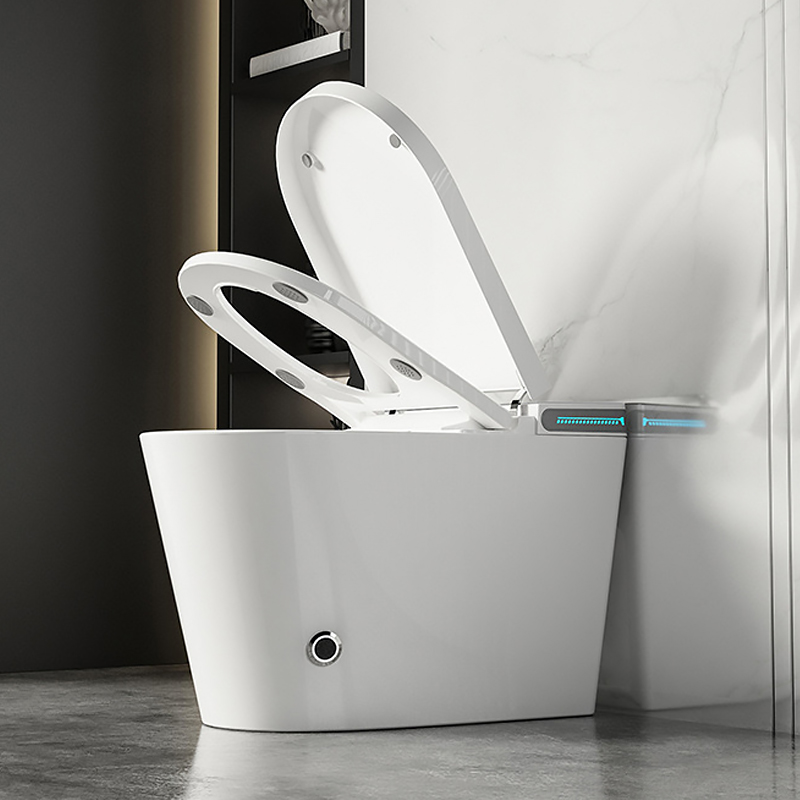
Two-Piece Toilets
Separate tank and bowl, generally more affordable and easier to repair.
Two-piece toilets are traditional and common, featuring a separate tank and bowl. They are less expensive and easier to install than one-piece toilets.
However, they require more cleaning effort due to the gap between the tank and the bowl.
High-Tank Toilets
A vintage design with a tank mounted high on the wall and connected to the bowl by a long pipe.
High-tank toilets feature a tank positioned high above the bowl, connected by a pipe. They add a vintage charm to your bathroom, but require more space.
The gravity helps in a powerful flush, but these toilets might be difficult to install and maintain.
Wall-Hang Toilets
Mounted on the wall, saving space and offering a modern look.
Wall-hang toilets, as the name suggests, are mounted on the wall, with the tank concealed behind the wall. They save space and offer a sleek, minimalist look.
However, they are more expensive and require professional installation.
Smart Toilets
Provide you comfort, convenience and improved hygiene.
Smart toilets are equipped with features like bidets, heated seats, and automatic flushing.
The shape of the bowl and the height of the toilet affect both comfort and usability.
- Elongated bowls provide more sitting space, while round bowls are more compact.
- Standard height toilets are about 15 inches high, whereas comfort height toilets range from 17 to 19 inches.
Decide on the flushing system to ensure optimal performance and water efficiency for your needs.
Gravity Flush Toilets
Uses gravity to create a flushing action.
Gravity flush toilets use the weight of water to create flushing pressure. They are reliable, require less maintenance, and are quieter than pressure-assisted toilets.
Siphon Jet Toilet
Uses a siphon action for a powerful flush.
Siphon jet toilets utilize a siphon action for flushing. They offer a powerful and quiet flush, but might require more water than gravity flush toilets.
Pressure Assisted Toilets
Uses pressurized air to improve flushing power.
Pressure assisted toilets use pressurized air to force water into the bowl. They offer a powerful flush, but are noisier and more expensive than gravity flush toilets.
Dual-Flush Toilet
Offers two flush options (low and high) to conserve water.
Dual-flush toilets offer two flush options: a half flush for liquid waste and a full flush for solid waste. They help in water conservation but are more expensive.
Double Jet & Cyclone Toilets
Double jet and cyclone toilets use more than one jet of water for a whirlpool-like flushing action. They provide a powerful and thorough flush, but might use more water.
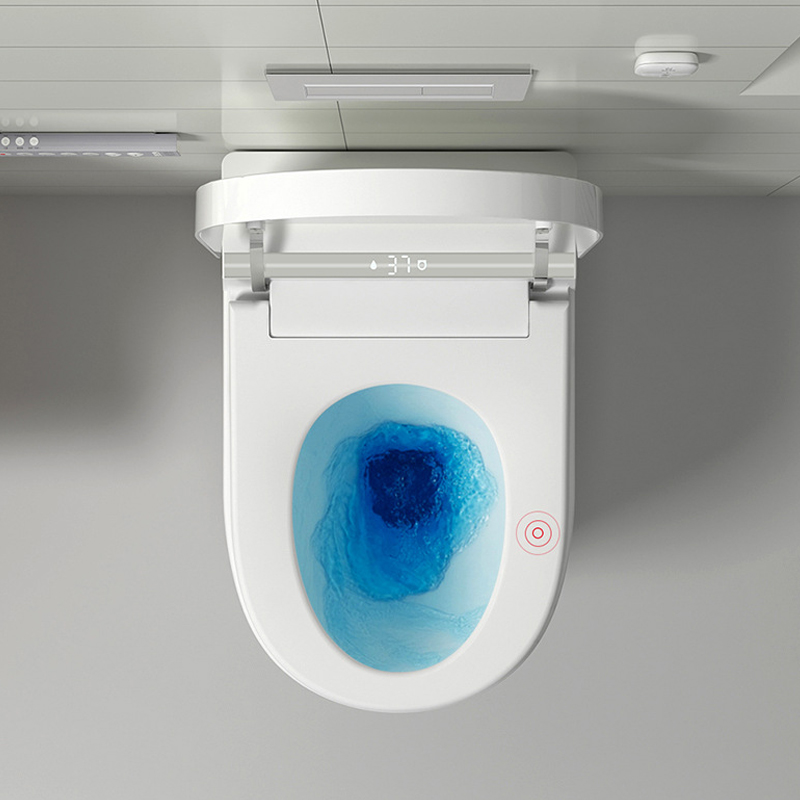
Choosing powerful flush toilets will efficiently remove waste with a single flush, reducing clogs and ensuring a cleaner bowl.
Select features for comfort and convenience, such as heated seats, bidet functions, and soft-close lids which are provided by smart toilets.
Comfort Features
- Seat Height: Standard height is around 15 inches, while comfort height (ADA compliant) is around 17-19 inches.
- Bowl Shape: Round bowls are compact; elongated bowls offer more comfort.
- Quiet Close Toilet Seat: Prevents slamming and adds a touch of luxury.
Smart Features
- Bidet Functionality: Provides a thorough clean with water.
- Heated Seats: Adds comfort during colder months.
- Automatic Flushing: Reduces the need for physical contact.
- Remote Control: Allows for easy adjustment of settings.
- Self-Cleaning: Keeps the bowl clean with minimal maintenance.
- Low-Flow Toilets: Use 1.6 gallons per flush (gpf) or less.
- High-Efficiency Toilets (HET): Use 1.28 gpf or less, meeting EPA WaterSense criteria.
- Dual Flush Toilets: Allow for both a full and a half flush to save water.
- Color: Choose a color that matches your bathroom decor.
- Style: Select a style that complements the overall design of your bathroom, whether it's modern, traditional, or transitional.
- Cost Range: Prices can vary widely from budget options around $100 to luxury models over $1,000.
- Installation Costs: Factor in the cost of professional installation if needed.
- Trusted Brands: Research and choose brands known for quality and reliability.
- Warranty: Look for products with good warranty coverage.
Consider the water efficiency to save on utility bills and support environmental conservation.
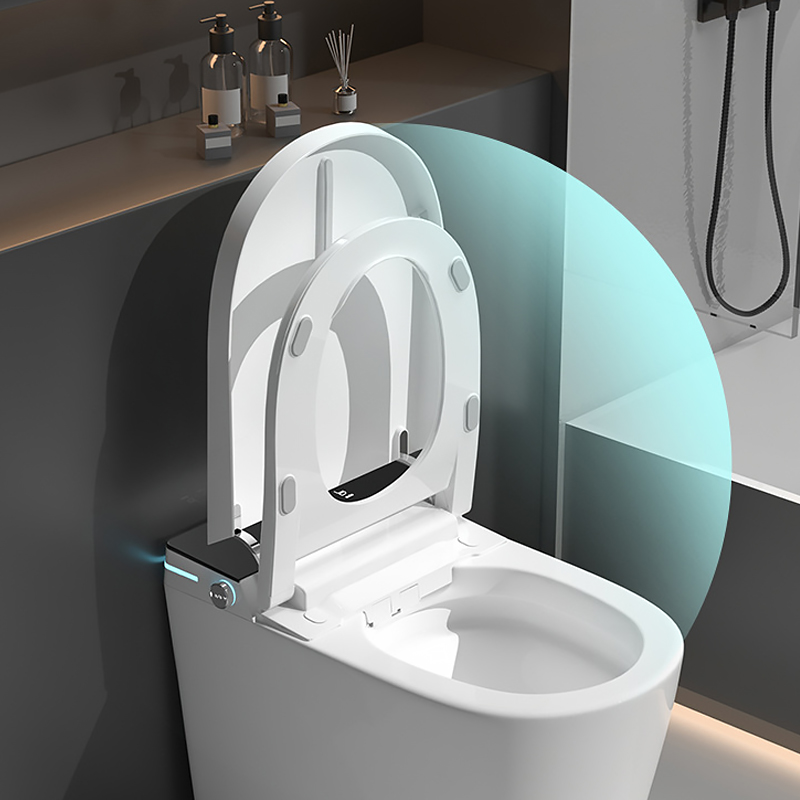
Design Considerations: Determine style and design to ensure the toilet complements your bathroom's overall aesthetic.
Floor mount toilets are the traditional and common type, where the toilet is attached to the floor. They are easier to install and less expensive.
Wall mount toilets are attached to the wall, with the tank concealed behind the wall. They save space and offer a sleek look, but are more expensive and require professional installation.
Check our guide to choosing wall-hung toilets.
Consider budget and brand to find a reliable toilet supplier that meets your financial and quality expectations.
Budgeting
Brand Reputation
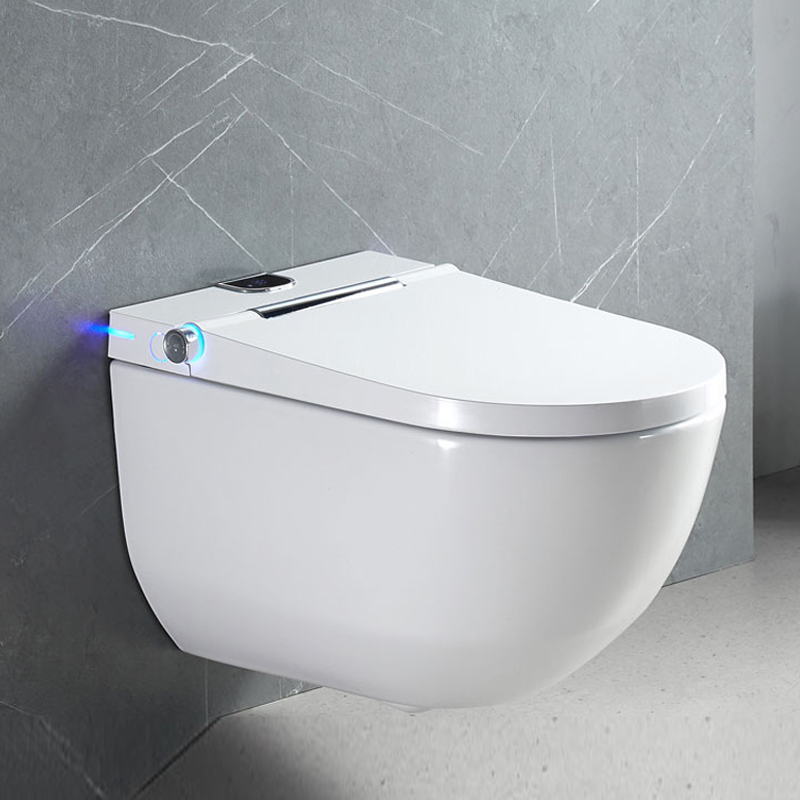
Toilet Purchasing Tips For Contractors & Distributors
For contractors and distributors, understanding your client's needs, preferences, and budget is key. Offer a range of options and provide detailed information about each type.
Consider factors like the size and layout of the bathroom, the preferred style, and the importance of water conservation. Also, provide guidance on installation and maintenance. <Read our buying guide>
Conclusion
Choosing the right toilet involves considering space, type, features, water efficiency, design, budget, and brand. By evaluating these factors, you can find a toilet that meets your needs and enhances your bathroom experience.
Partner with Jabra Sanitary (jabrasanitary.com) to explore a wider range of bathroom toilets! We offer a comprehensive range of bathroom toilets, ensuring that you find the perfect fit for your needs.








